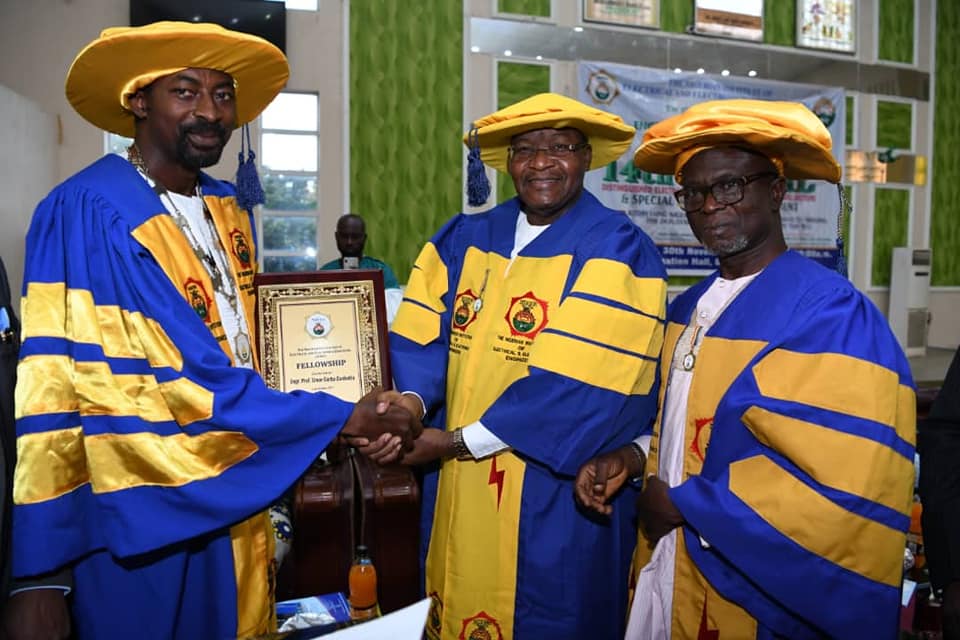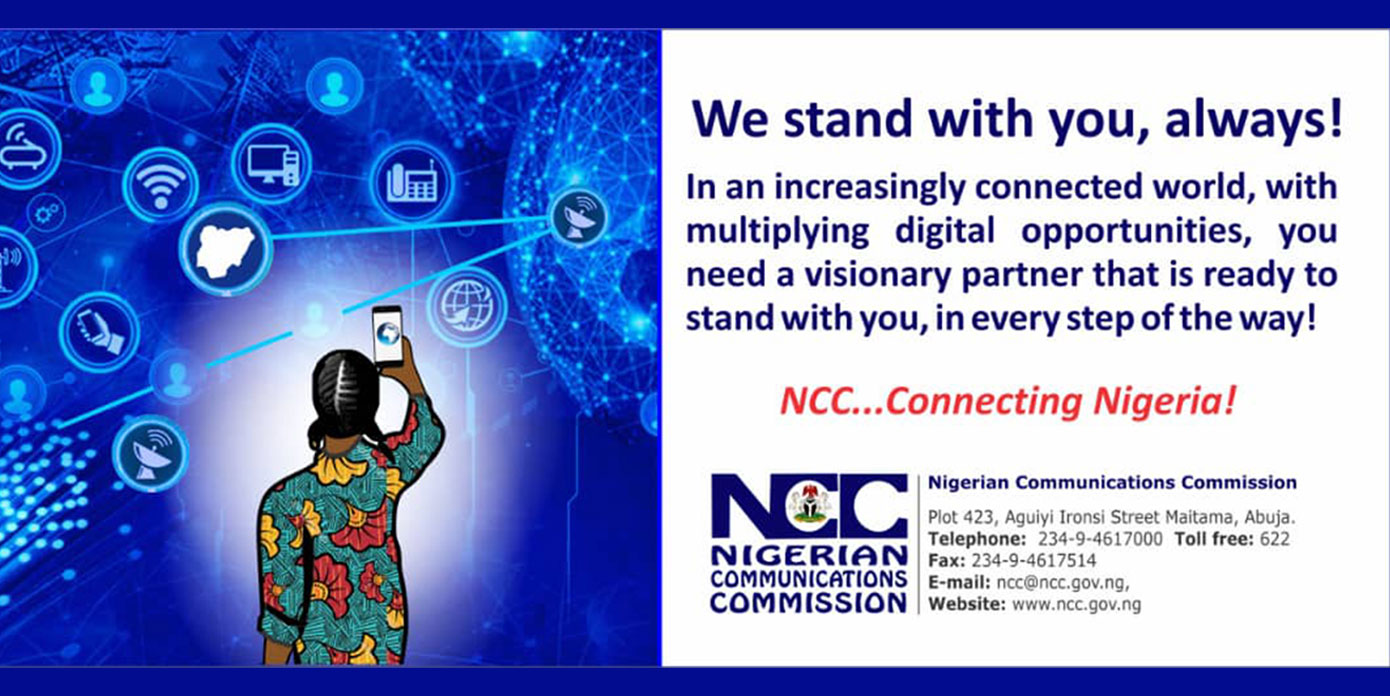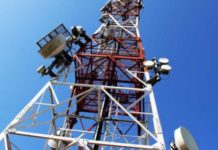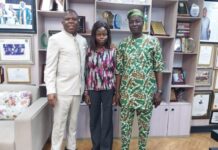
L-R: Engr. John Funso-Adebayo, National Chairman of the Nigerian Institute of Electrical and Electronic Engineers (NIEEE), Prof. Umar Garba Danbatta, Executive Vice Chairman/CEO NCC; Engr. Morufudeen Odetokun, Fellowship Committee Chairman during the 14th DEEEAL & Special Fellowship Conferment.
The Executive Vice Chairman (EVC) of the Nigerian Communications Commission (NCC), Prof. Umar Danbatta, has been conferred with his fourth engineering fellowship award.
The latest came from the Institute of Electrical and Electronic Engineering (IEEE).
Danbatta had earlier been inducted as a Fellow of Nigeria Society of Engineers (NSE), Nigerian Academy of Engineering (NAEng) and Renewable and Alternative Energy Society (RAES).
The Conferment ceremony held on 30/11/19 in Kano where Danbatta also delivered the Institute’s 14th Distinguished Electrical and Electronic Engineer Annual Lecture and Special Fellowship Conferment.
In the Lecture, titled, “Addressing Nigeria’s Telecoms Infrastructure Deficit: Driving the Deployment of Broadband Networks by the NCC”, Danbatta stated that although telecoms operators and the Universal Service Provision Fund (USPF) have laid over 42,000km of inter-city fibre and installed more than 40,000 Base Transceiver Stations (BTSs) respectively, Nigeria still faces major broadband challenges such as under-utilisation of the submarine broadband capacity at the landing shores.
The implication is that Nigeria uses less than 10 percent of the 60 terabits capacity that is available while ironically bereft of adequate intra-city metro fibre infrastructure in several towns and cities.
The EVC affirmed that 120,000km of fibre is required to cover the whole country but even in the vortex of inadequacy of fibre, stakeholders bottlenecks such as multiple taxation, multiple regulations, stifling Right of Way (RoW) charges, epileptic power supply, vandalism of infrastructure, and scarcity of foreign exchange remain strangulating factors affecting telecoms services in Nigeria.
Danbatta underscored the centrality of broadband access to development by citing a World Bank study which revealed that every 10 percent increase in broadband penetration, results in, at least, 1.3 percent increase in Gross Domestic Product (GDP) of developing countries.
The EVC noted that this and other empirical facts explained Nigeria’s adoption of the Open Access Model (OAM) for the expansion of Nigeria’s broadband infrastructure.
To address the foregoing challenges to robust telecom service provision, Danbatta said the Commission has adopted strategies for attracting investment, bridging clusters of access gaps and collaborative stakeholders management.
In a more concrete sense, Danbatta revealed that NCC undertakes optimum spectrum utilisation to address the fixed and wireless broadband infrastructure deficits and in implementing the Open Access Model (OAM), the Commission has licensed infrastructure companies (InfraCos) that will cascade fibre from shores to metropolitan areas and the hinterlands in order to ensure greater access to broadband by entrepreneurs, and to trigger innovation, bolster economic activities and national development.













